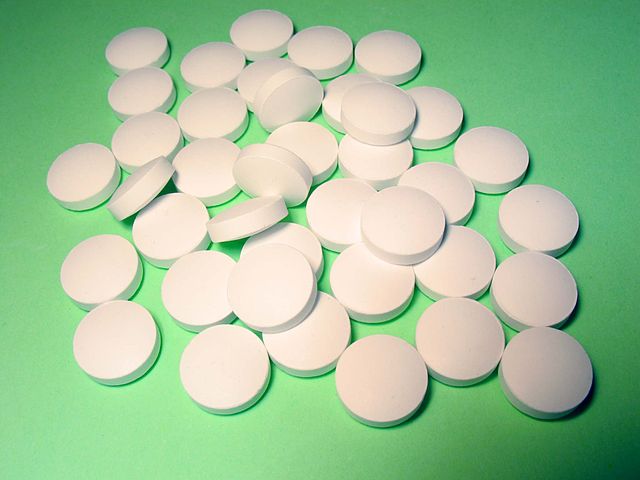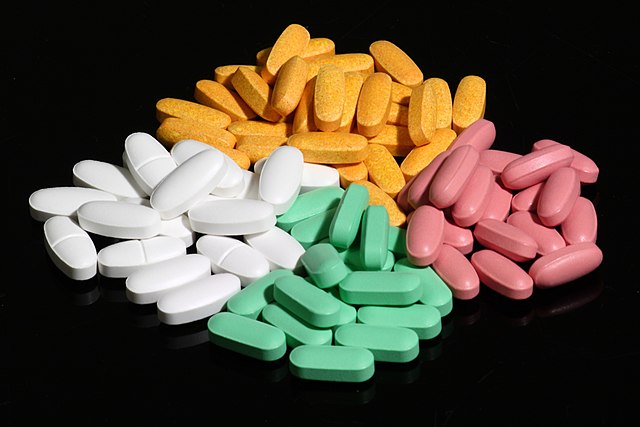A tablet is a pharmaceutical oral dosage form or solid unit dosage form. Tablets may be defined as the solid unit dosage form of medication with suitable excipients. It comprises a mixture of active substances and excipients, usually in powder form, that are pressed or compacted into a solid dose. The main advantages of tablets are that they ensure a consistent dose of medicine that is easy to consume.
Common disk-shaped tablets
Combined oral contraceptive pills were nicknamed "the pill" in the 1960s[citation needed]
Variations on a common tablet design, which can be distinguished by both colour and shape
Olanzapine tablets
Dosage forms are pharmaceutical drug products in the form in which they are marketed for use, with a specific mixture of active ingredients and inactive components (excipients), in a particular configuration, and apportioned into a particular dose. For example, two products may both be amoxicillin, but one is in 500 mg capsules and another is in 250 mg chewable tablets. The term unit dose can also sometimes encompass non-reusable packaging as well, although the FDA distinguishes that by unit-dose "packaging" or "dispensing". Depending on the context, multi(ple) unit dose can refer to distinct drug products packaged together, or to a single drug product containing multiple drugs and/or doses. The term dosage form can also sometimes refer only to the pharmaceutical formulation of a drug product's constituent drug substance(s) and any blends involved, without considering matters beyond that. Because of the somewhat vague boundaries and unclear overlap of these terms and certain variants and qualifiers within the pharmaceutical industry, caution is often advisable when conversing with someone who may be unfamiliar with another person's use of the term.

Tablet in blister pack
single unit packets with full identification (text and bar codes)
vials of eye drops for single use
An ampoule containing atropine injection 1mL/0.5mg


![Combined oral contraceptive pills were nicknamed "the pill" in the 1960s[citation needed]](https://upload.wikimedia.org/wikipedia/commons/thumb/1/1d/Pilule_contraceptive.jpg/640px-Pilule_contraceptive.jpg)





